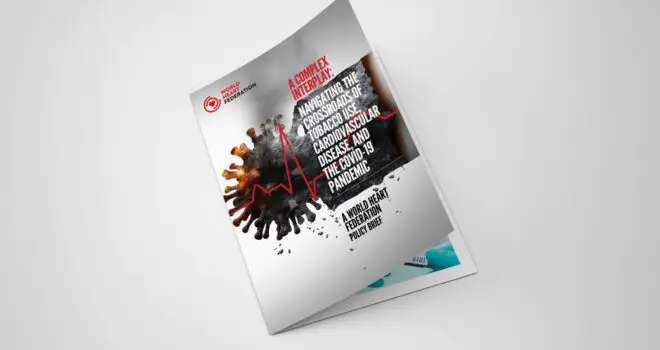By the beginning of 2020, when we heard of a novel coronavirus and its potentially severe consequences, the race was on to learn everything we could and should about it. Before long, and with so much still to be discovered, an unfortunate trend emerged: severe acute respiratory syndrome coronavirus 2 (SARS-CoV-2) or Coronavirus Disease (COVID-19) posed a particular risk to patients with underlying issues such as heart disease, which is already the leading cause of death globally. COVID-19 is a double-edged threat to those with cardiovascular disease (CVD) who fall ill as well as to those afraid to seek ongoing, standard care for their heart. It calls for a dual approach: to harness a growing awareness and to reassure everyone that non-COVID care is as available and safe as before.
A “side effect” of the Covid-19 pandemic
Our heart is like the body’s super-highway, connecting with other organs, via blood vessels (‘vascular’) to the brain, limbs and the heart (cardio) muscle itself. Diseases affecting this intricate system are referred to as cardiovascular diseases (CVDs) and are actually a group of disorders which can manifest in different ways. CVD causes more deaths globally than any other ailment, more than 75% of which are in low- and middle-income countries.
Early in the pandemic, a pattern emerged showing a high death rate among patients with underlying health issues, CVD being a main one. Also emerging was a reduced rate of visits by heart patients who would usually seek routine care or need to access emergency services for non-COVID related issues. Across the board, countries noted this dramatic drop, attributing it to fear of contracting COVID-19. In early April, an article by the British Heart Foundation noted a 50% drop since the start of March in suspected heart attack patients usually seen in hospital.
In her blog, Dr Lilian Mbau, a practitioner in Kenya, raised the question of the ticking time bomb, citing the nearly 80% of elective admissions and procedures that were postponed in most countries, according to an April study. Across Canada, USA and other countries, news reported downward trends in patient visits. How many CVD patients have further put themselves at risk? Far from reproach — because fear in the face a new disease is understandable — perhaps what this secondary impact of COVID-19 really urges is a close look at medical and media approaches in times of global emergencies. It emphasises the need to offer reassurance and facts so that patients understand that a trip to the hospital is not a trip to the hospital bed due to the pandemic.
The why and how of heart care in the time of COVID-19
Reassurance is key during a pandemic and it is particularly important for those already dealing with illnesses such as CVD. The American Heart Association put it simply and effectively: ‘Your emergency room is safe. And if you need to go, you should.’ In its article, a good dose of perspective is offered, stressing that the risks of heart and stroke far outweigh the risks of contracting COVID-19 and that time is truly of the essence when heart troubles hit. While telemedicine has been an important resource, such consultation-at-distance should not be seen as a replacement for in-person care nor should it be interpreted as a measure taken because hospital visits have become unsafe.
Communication: Cardiologists are in the midst of the battle. Along with the technical aspects that are part of medical care, listening to the anxieties of patients is an important part of ensuring that they continue to access the care they need. This element of patient-doctor communication is critically important at a time of heightened worry and uncertainty. It’s what cardiologist Eduardo Chuquiure-Valenzuela mentions in his blog on healing body and spirit, while reflecting on contact with friends and patients alike and who all share similar concerns.
Guidance: It is also worth remembering that CVD patients who get care in the time of COVID-19 and practise the recommendations that have been developed for all are strengthening their own support systems against the virus.
“Beyond COVID-19”
Many think tanks, global experts, and organizations are offering their prognoses about the future and the ‘post-pandemic normal.’ Indeed, “Beyond COVID-19” has become a new rubric in public discourse. An array of thoughts and models focus on environmental concerns, business approaches, economic trends, social interactions, and throughout them all, the role of everything digital. But what about health and the learnings from a disease that is particularly threatening to those already suffering from the leading cause of death worldwide?
COVID-19 might be one unlikely impetus to ensure a healthier heart future. It seems that in the months since December 2019, those outside the medical sphere have heard more about the cardiovascular struggles of patients and the range of research by cardiologists and organizations such as those making up the World Heart Federation. We might also just be paying more attention. The data, the stories, and the successes as well as the gaps offer an opportunity not to be missed; if we take it, then together, our work will outlast the pandemic and help save more lives.


